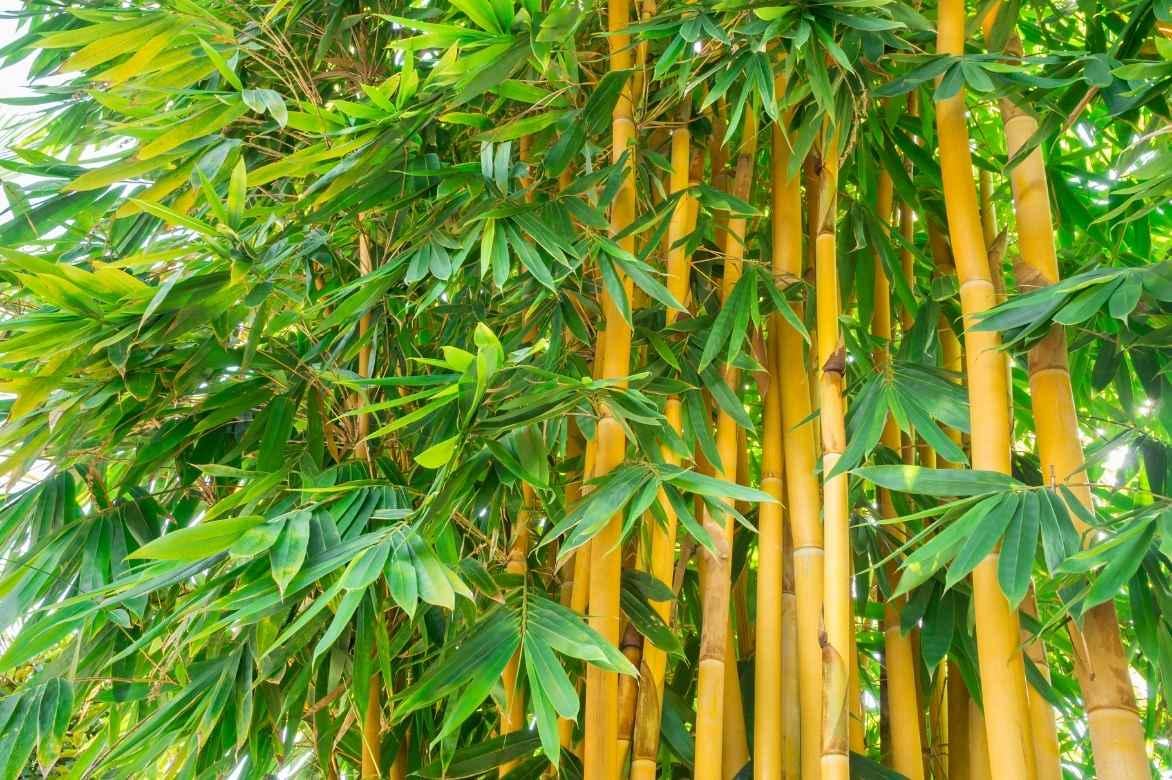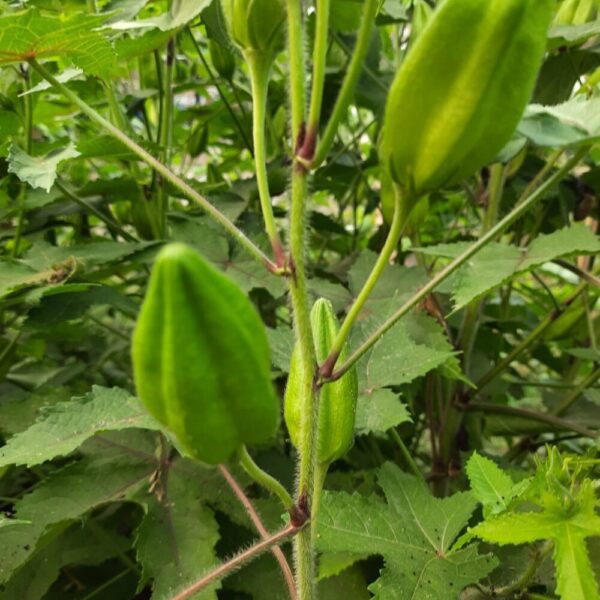Bambusa arundinacea green yellow hollow big bamboo tree seeds
Bambusa arundinacea green yellow hollow big bamboo tree seeds
Quantity: 3 grams
How to Plant Bambusa Arundinacea Bamboo Seeds
- Prepare the Soil: Bamboo prefers well-drained, slightly acidic to neutral soil. Ensure the planting area receives full sunlight or partial shade.
- Soak the Seeds: Before planting, soak your bamboo seeds in warm water for 24-48 hours. This helps soften the seed coat and improves germination.
- Plant the Bambusa arundinacea green yellow hollow big bamboo tree seeds: Plant your bamboo seeds in a shallow container, about 1-2 inches deep, in a potting mix that drains well.
- Keep Moist: Bamboo prefers consistently moist soil. Keep the soil damp, but not waterlogged, while the seeds germinate.
- Provide Light: Place the pots in a bright, sunny location for optimal growth. Bamboo seeds typically germinate within 2-4 weeks.
- Transplanting: Once the seedlings are large enough, they can be transplanted into the ground or larger pots for further growth.
Why Choose HoogaSeeds.com?
At HoogaSeeds.com, we are passionate about providing our customers with high-quality, reliable seeds for their gardening projects. When you purchase Bambusa arundinacea bamboo seeds from us, you get:
- Premium Seed Quality: We source only the best, non-GMO seeds to ensure your gardening success.
- Eco-Friendly Products: Our bamboo seeds are a sustainable option for environmentally conscious gardeners.
- Expert Guidance: Our team offers helpful tips and detailed instructions to ensure your bamboo grows strong and healthy.
- Fast and Reliable Shipping: Get your seeds delivered quickly and start your bamboo garden without delay.
Order Your Bambusa Arundinacea Bamboo Seeds Today!
If you’re ready to add the beauty, versatility, and environmental benefits of Bambusa arundinacea to your garden, HoogaSeeds.com is the place to buy high-quality bamboo seeds. Create a stunning outdoor oasis with the fast-growing and eco-friendly Green Yellow Hollow Big Bamboo.
Shop now at HoogaSeeds.com and start your bamboo-growing adventure today! 🌱
Bambusa arundinacea green yellow hollow big bamboo tree seeds
Out of stock
Bambusa arundinacea green yellow hollow big bamboo tree seeds
Buy Bambusa Arundinacea (Green Yellow Hollow Big Bamboo) Tree Seeds at HoogaSeeds.com
Are you looking to grow a stunning, fast-growing bamboo tree that adds beauty, privacy, and natural elegance to your garden or landscape? Look no further than Bambusa arundinacea—also known as the Green Yellow Hollow Big Bamboo. Renowned for its striking appearance and versatile use, this bamboo variety is perfect for gardeners and landscapers who want to create a tropical oasis or enhance their outdoor space. At HoogaSeeds.com, we offer top-quality Bambusa Arundinacea seeds to help you grow your very own bamboo grove!
What is Bambusa Arundinacea (Green Yellow Hollow Big Bamboo)?
Bambusa arundinacea is a large, clumping bamboo species native to Asia. Known for its tall, upright stems and unique green-yellow color variation, this bamboo tree is a fantastic ornamental plant that thrives in various climates. The bamboo can grow up to 20-30 feet tall, making it an excellent choice for privacy screens, hedges, and garden backdrops. Its hollow, sturdy culms are perfect for landscaping projects, creating natural fences, or even crafting bamboo furniture.
This bamboo variety is admired for its fast growth, resilience, and aesthetic appeal. Its green stems gradually turn yellow, adding a pop of color to any garden setting. Ideal for gardeners seeking an exotic and low-maintenance plant, Bambusa arundinacea is also widely used for its environmental benefits and eco-friendly properties.
Why Grow Bambusa Arundinacea Bamboo?
- Fast Growth and Height
Bambusa arundinacea is a fast-growing bamboo, making it a quick solution for creating privacy or shade. It can reach impressive heights of 20-30 feet, and with proper care, you’ll see rapid growth within just a few months. - Stunning Aesthetic
The green-yellow color of the bamboo’s hollow stems creates a visually striking effect, adding an exotic and vibrant touch to your landscape. Its dense foliage also creates a lush backdrop, making it a beautiful addition to gardens, patios, or even urban spaces. - Privacy and Screening
Thanks to its thick, tall growth, Bambusa arundinacea is an excellent plant for creating natural privacy screens or hedges. Whether you’re looking to block out noise, shield your space from neighbors, or add greenery to your outdoor space, this bamboo variety delivers exceptional results. - Environmentally Friendly
Bamboo is one of the most sustainable plants on Earth. As a grass, it grows quickly without requiring harmful chemicals, making it an environmentally friendly choice for gardeners. Bamboo also helps in preventing soil erosion and providing habitat for wildlife. - Low Maintenance
Once established, Bambusa arundinacea requires minimal care. It is drought-tolerant, adaptable to various soil types, and thrives in both full sun and partial shade, making it a low-maintenance plant for gardeners of all experience levels. - Versatile Uses
Bambusa arundinacea bamboo is ideal for a wide range of uses, including:- Landscaping: Create beautiful hedges, privacy screens, or garden features.
- Crafting and DIY Projects: Harvest bamboo poles for furniture, fencing, and decorative accents.
- Eco-friendly Applications: Use bamboo for sustainable building materials and other green projects.
Features of Our Bambusa Arundinacea Bamboo Seeds:
- High Germination Rate: Our seeds are carefully selected to ensure a high germination rate, so you can get your bamboo grove started quickly.
- Non-GMO and Chemical-Free: At HoogaSeeds.com, we provide only 100% natural seeds that are free of GMOs and harmful chemicals.
- Easy to Grow: Bambusa arundinacea is easy to grow from seed, and with our step-by-step instructions, even first-time gardeners can successfully cultivate this stunning bamboo.
- Fast Shipping: Once you order, we ship your Bambusa bamboo seeds promptly so you can get started right away.
How to Plant Bambusa Arundinacea Bamboo Seeds
- Prepare the Soil: Bamboo prefers well-drained, slightly acidic to neutral soil. Ensure the planting area receives full sunlight or partial shade.
- Soak the Seeds: Before planting, soak your bamboo seeds in warm water for 24-48 hours. This helps soften the seed coat and improves germination.
- Plant the Bambusa arundinacea green yellow hollow big bamboo tree seeds: Plant your bamboo seeds in a shallow container, about 1-2 inches deep, in a potting mix that drains well.
- Keep Moist: Bamboo prefers consistently moist soil. Keep the soil damp, but not waterlogged, while the seeds germinate.
- Provide Light: Place the pots in a bright, sunny location for optimal growth. Bamboo seeds typically germinate within 2-4 weeks.
- Transplanting: Once the seedlings are large enough, they can be transplanted into the ground or larger pots for further growth.
Why Choose HoogaSeeds.com?
At HoogaSeeds.com, we are passionate about providing our customers with high-quality, reliable seeds for their gardening projects. When you purchase Bambusa arundinacea bamboo seeds from us, you get:
- Premium Seed Quality: We source only the best, non-GMO seeds to ensure your gardening success.
- Eco-Friendly Products: Our bamboo seeds are a sustainable option for environmentally conscious gardeners.
- Expert Guidance: Our team offers helpful tips and detailed instructions to ensure your bamboo grows strong and healthy.
- Fast and Reliable Shipping: Get your seeds delivered quickly and start your bamboo garden without delay.
Order Your Bambusa Arundinacea Bamboo Seeds Today!
If you’re ready to add the beauty, versatility, and environmental benefits of Bambusa arundinacea to your garden, HoogaSeeds.com is the place to buy high-quality bamboo seeds. Create a stunning outdoor oasis with the fast-growing and eco-friendly Green Yellow Hollow Big Bamboo.
Shop now at HoogaSeeds.com and start your bamboo-growing adventure today! 🌱
Bambusa arundinacea green yellow hollow big bamboo tree seeds
| Weight | 30 g |
|---|---|
| Dimensions | 11 × 9 × 11 cm |







Reviews
There are no reviews yet.